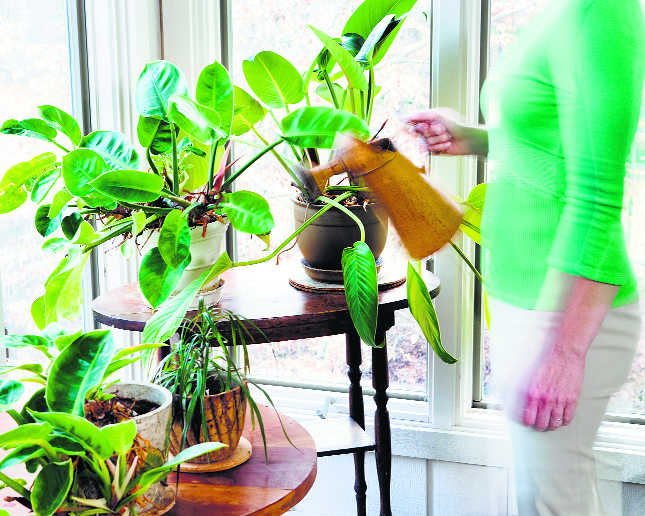
iStock
Amarjeet Batth
As temperatures soar in the region plant lovers get over zealous about watering their collection of plants. Daily watering (even twice a day) is seen as a measure of good plant care. But very few people actually realise that their over enthusiasm in loading the pots and garden beds with water can actualy “kill” their cherished plant. Always remember that watering the plants is not a generic activity, it has to be specific. To know when (the time), how many times, (the frequency), and when ‘not to’ irrigate your plants is important. The water intake requirement varies with type of soil, plant’s age, size, root system, growth phase and the season.
Prevailing erratic weather conditions with unexpected showers have not only reduced the water intake, but also increased atmospheric humidity and caused fall in the day temperature. Therefore, it is imperative for a gardener to adapt to the changing irrigation needs of the plants.
Lawn
Lawn is a prime feature in every garden and requires round-the-year irrigation. Irrigation with a sprinkler system is a smart way to conserve water. Avoid deep irrigation as grass roots are shallow and moisture up to 4-6 inches is enough to keep the grass healthy. Economical portable sprinklers are cheap and handy to use. Sprinklers also create a micro humid environment around the grass which is good for its growth.
Micro jet system gives a fine spray covering an area of up to 2 meters. It is cost effective in comparison to drip irrigation. Mini sprinkler system is suitable for covering medium sized area up to 5 meters. In this system the water is thrown in droplets instead of mist. The trajectory is low with excellent uniform water distribution. Installation is easy and quick
As for the right time to water your lawn, evenings are the best. However a light shower in the morning can also be given during extreme summers.
Flowers and veggies
Irrigation is more frequently required during summers to maintain moisture level. Lengthy drought intervals put stress on plants and may affect vegetable yield. however, over watering must be avoided which causes rotting of roots, more vegetative growth and turns the leaves yellow due to poor aeration. Summer vegetables require twice a week deep irrigation. However, mint requires regular watering. Vegetables grown in pots can be easily irrigated with drip irrigation system. Drip irrigation provides efficiency and water conservation. It can be achieved by releasing water to the roots of plants. Soaker hose system is a quick and easy way to irrigate long areas such as flower borders, hedge or vegetables rows. It is a porous pipe which releases water slowly thus providing deep irrigation. All you need to do is to unroll the porous pipe which oozes water at low pressure along its entire length. Recycle excess water, use home waste water (not soap water) to irrigate your kitchen garden.
Pots
It is a common practice to ‘top up’ the pots with water and as a result the water drips down into the ‘Drip Tray’. But remember that as the water goes down it also carries the nutrients along. To avoid leaching of the nutrients restrict the water intake so that minimum quantity of water drips into the try. Also instead of throwing the water, reuse it.
Save plants from vacation shock
We all look for vacations and summer vacations are the most eagerly awaited. But leaving the plants uncared for a long period can weight heavily on the mind of a gardening enthusiast. As a plant lover you need to take a few steps to irrigate the plants in absentia. The plants may not remain as lush as when you care them on daily basis but by using these method they will not perish:
Step 1: Move and group the pots under shade, net or a tree.
Step 2: Top up the ‘drip plate’ with water so that plant can absorb it from the bottom through drain plug. This method is good if you are going on weekends or short vacations.
Step 3: Take a water bottle and make 2-3 fine holes in the cap by heating a needle. Fill it with water and insert the top cap side in the pot. If bottle is large, support it with a staking. Pierce a needle at the bottle base side also so that air can enter the bottle. Alternately you can cut the bottle base for easy topping it with water. This practice can also be done for plants planted in garden soil.
Step 4: Hang a water filled plastic water bottle with a fine hole in the cap and one at the bottom. It can be done for pots or hanging baskets.
Step 5: Request a friend to visit your plants and refill the bottles.



























